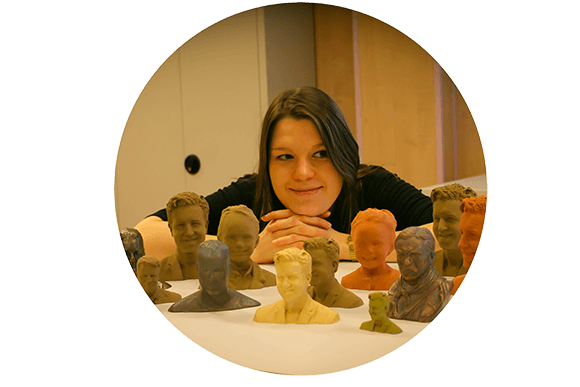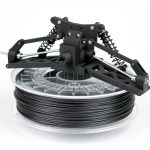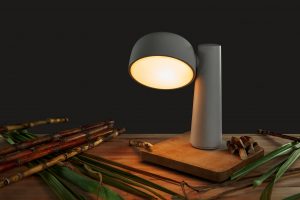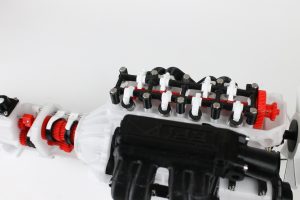My name is Ines Cebulla. I‘m 23 years old and was born in germany. I‘m an open minded person who is interested in new experiences with technology and design. Currently I‘m studying Industrial Product Design at Fontys Hoogeschool Venlo and will most likely graduate next summer with the Bachelor of Engeneering. For my Bachelor‘s Thesis I‘m working on a five months internship at Colorfabb.
Colorfabb has the possibility to print bronze-, copper- and brassfilaments and give it a professional polish finish. My assignment is to test the possiblities of these materials. We want to print busts, works of art and other products for our clients with this method. Therefore we need to know which products are printable and how it is possible to scan people and products in the best way. What are you interested in and do you already have experiences with 3D scanning? All this I want to know to elaborate a concept for a printshop which makes your scans a product. I would appreciate to get your feedback and support.






2 Comments
Hi Ines, very nice internship that you have here! Lucky 😉
I’ve been using 3D Sense http://cubify.com/Products/Sense but it is very limited and you are very often loosing your scan. What we found best is to use a camera foot and seat the person in a rotating stool, it is working much better. However it is very time consuming to scan only.
Our next try is going to build a pi3dscan (instructions at http://www.instructables.com/id/Multiple-Raspberry-PI-3D-Scanner/, website: http://www.pi3dscan.com/). It seems a very “affordable” full body scan in full color and in a very short time…of course not to mention that it is open source 😉
Let us know if you find interesting solutions
Hi Gerald, thank you 🙂 It really is!
I’ve been also using two different scanners which had similar problems. One of it was the Asus XTION Pro Live the other I don’t have here right now, so I’m not sure about the name. Both of them were also loosing track for ~ 50 % of the time and I was very dissapointed of the results. We also used a rotatiting chair but the results were still in a bad quality. Maybe it’s because I just used the freeware of Skanact and not the professional one, do you have any experiences with it?
Your plan to build an own pi3dscan sounds really interesting, let me know how it works.
We also have some scans which are made by a scaning company which is using a system similar to the one of the pi3dscan. This results in a much better quality and level of detail. But for my project I would prefer if people have the chance to scan themself at home too.
Sure, I will let you know about my further solutions 🙂